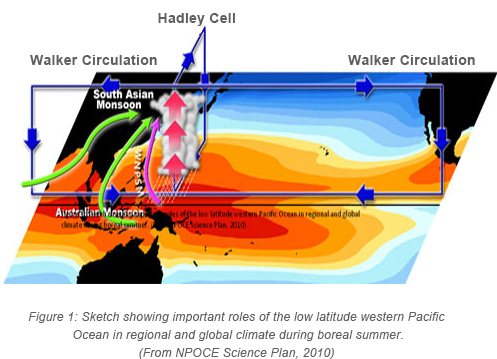
The Northwestern Pacific (NWP) features a complicated ocean circulation system with intensive multiscale air-sea interactions. It is a crossroad and major pathway whereby different water masses from mid- and high-latitudes and the southern hemisphere enter the equatorial thermocline. As the origin of several major currents including the northward Kuroshio, the eastward North Equatorial countercurrent (NECC), the Indonesian Throughflow (ITF), as well as the recently identified the South China Sea Throughflow (SCSTF), the NWP strongly interacts with the ambient oceans and marginal seas, and participates in the recharge-discharge process of the western Pacific warm pool. The changes in the NWP water properties and ocean circulation can influence the heat and freshwater budget and hence the atmospheric deep convection over the Indo-Pacific warm pool, thereby playing a role in modulating El Niño-Southern Oscillation (ENSO) cycles and Asian-Australian Monsoon (AAM) variations, as well as in the development and evolution of the NWP cyclones.Although significant advances have been made over the past several decades, our understanding of the mean circulations in the NWP remains incomplete, the origins of the Mindanao Undercurrent (MUC) and the Equatorial Undercurrent (EUC), the water exchanges between the NWP and the South China Sea (SCS) via the Luzon Strait, and the circulation connectivity among the Halmahera Sea, the Maluku Sea, Celebes Sea are still poorly understood owing to scarce and inadequate observations. Furthermore, variability of the low latitude western boundary currents (LLWBCs) is largely unknown, since so far there have been no long-term moored measurements of ocean currents. The lack of in-situ observations severely hinders our understanding of subtropical-tropical water and heat exchanges and their roles in decadal and long-term changes of the tropical ocean-atmospheric circulations. Few observations in the NWP provide reliable information to validate model capability in simulating oceanic heat and freshwater transport, which is crucial to the warm pool maintenance and low-frequency variability of the region.